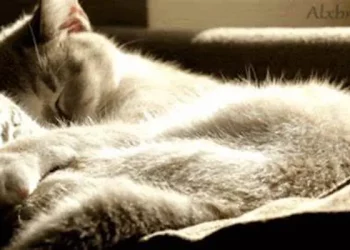In the realm of international pet culture, few feline breeds captivate attention quite like the Thai Royal Cat, or Khao Manee—a revered breed celebrated for its striking pure white coat and heterochromatic eyes, where one eye is often a vivid blue and the other a warm amber or green. Historically cherished as “royal companions” in Thailand’s imperial courts, these cats have long been shrouded in myth and prestige. However, their status as a culturally protected treasure has taken a modern turn, as a strict export ban enforced by Thai authorities has transformed their availability—and value—on the global market.
The Khao Manee’s journey to international fame is rooted in its unique genetic traits and historical significance. For centuries, these cats were exclusively owned by Thai royalty and nobles, symbolizing good fortune and prosperity. Their rarity was further amplified by traditional beliefs that they possessed spiritual powers, making them taboo to sell or gift outside noble circles. In recent decades, as global interest in exotic pet breeds surged, the Thai government sought to preserve the breed’s integrity and cultural heritage by imposing a stringent export ban, restricting all but a few diplomatic or conservation-related transfers.
The ban’s impact on the international pet market has been dramatic. With legitimate exports virtually nonexistent, the Khao Manee has become one of the world’s most sought-after and expensive cat breeds. Black market demand has risen, with unscrupulous traders reportedly offering kittens at prices exceeding $20,000 USD, capitalizing on the breed’s mystique and scarcity. Meanwhile, legal channels for acquiring the cats remain highly restricted, often requiring lengthy bureaucratic approval and proof of non-commercial intent. This has created a paradox: while Thailand aims to protect the breed from exploitation, the very restrictions intended to safeguard it have fueled a lucrative underground trade and heightened its allure among collectors and enthusiasts.
Beyond monetary value, the Khao Manee’s story highlights broader tensions between cultural preservation and global consumerism. Animal welfare advocates warn that the breed’s limited gene pool—exacerbated by the ban—could lead to health issues from inbreeding, while conservationists argue that strict regulations may hinder efforts to promote genetic diversity. Meanwhile, Thai authorities face pressure to balance heritage protection with the economic opportunities of responsible pet trade, such as controlled breeding programs or tourism initiatives centered on the cats’ royal legacy.
As the Khao Manee continues to dominate headlines in luxury pet circles, its saga serves as a case study in how cultural symbolism and legal restrictions can shape global markets. For now, the breed remains a living emblem of Thailand’s rich history—one that, paradoxically, owes much of its international fame to the very barriers that keep it confined within national borders. Whether future policies will reconcile preservation with accessibility remains to be seen, but for now, the Thai Royal Cat’s status as a “forbidden treasure” only deepens its legendary allure in the eyes of the world.
Related Topic:



























